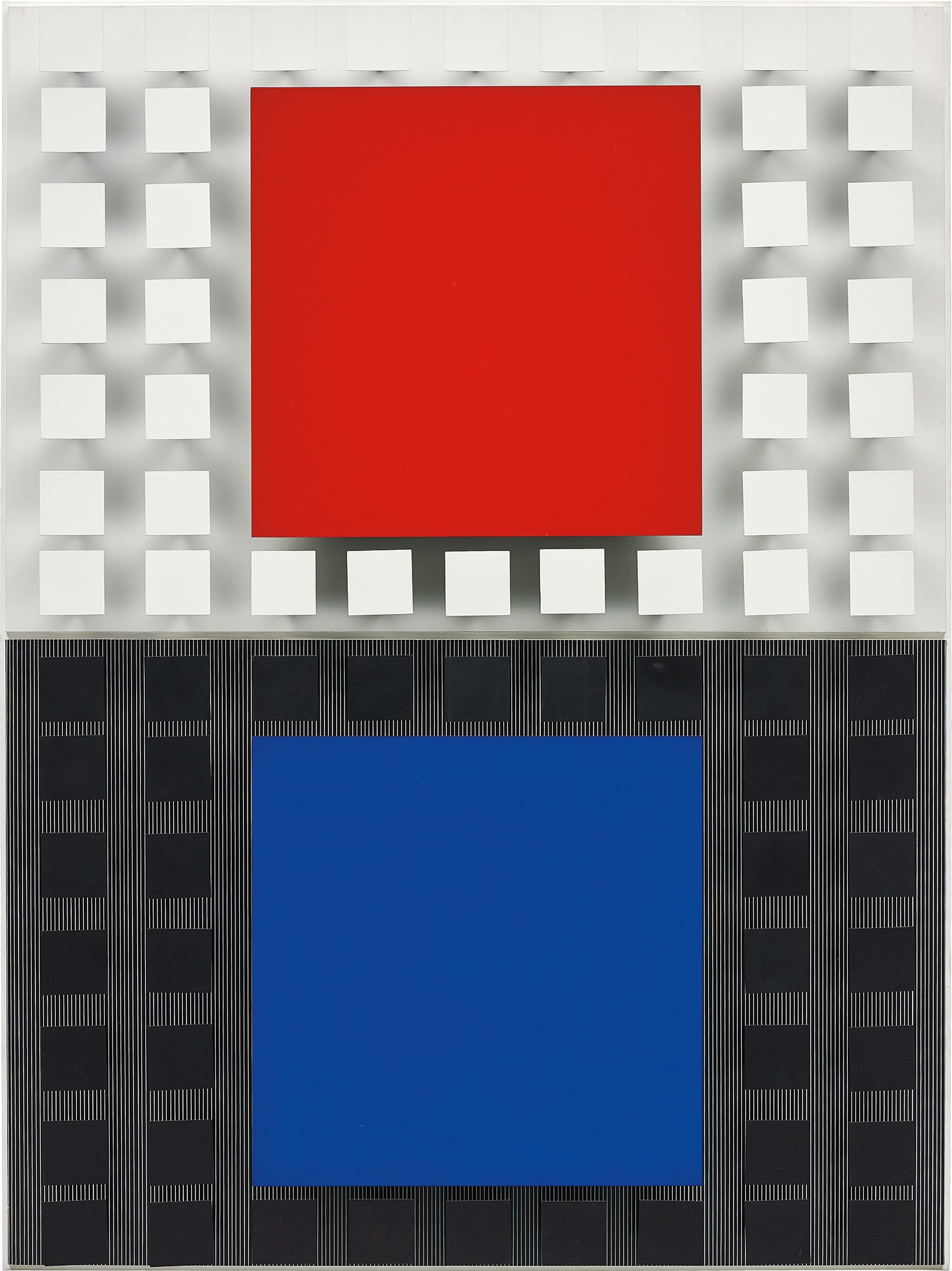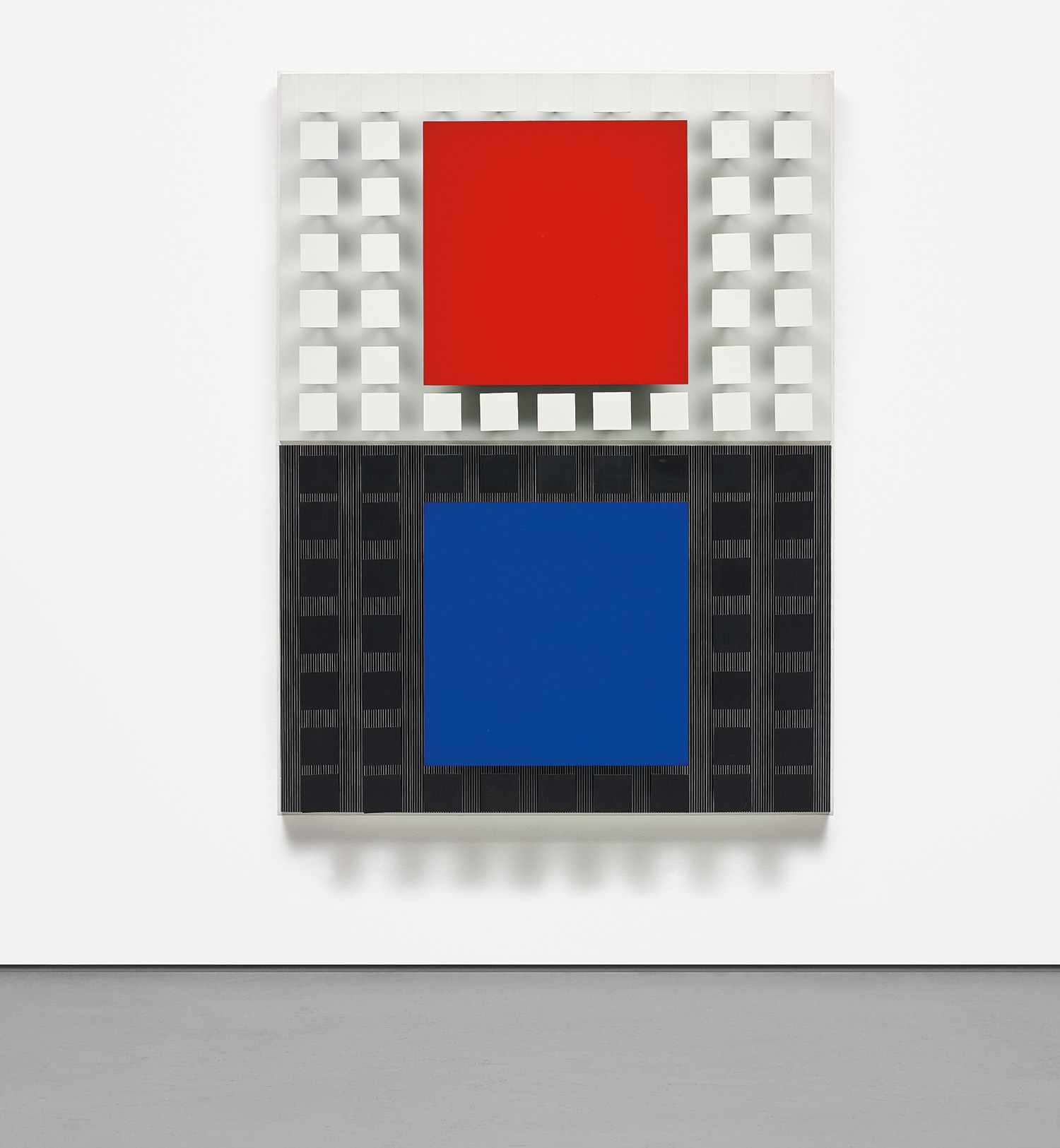



35
Jesús Rafael Soto
Azul con Rojo
Full-Cataloguing
While studying fine arts in Caracas in the mid-1940s, Soto was deeply impressed by the aesthetics of Impressionism. Yet, as the movement favoured a soft, unaggressive light that resembled the subtle rays of the south of France, the artist lacked a relatable reference that could conjure the warmth of his tropical sun. He thus turned away from Impressionist imagery and instead gravitated towards Cubism, which broke the world up into planes in a way that aligned with his perception of surrounding landscapes. Throughout his career, he explored the manifestations of the physical world around him: through an ingenious method of repetition, he created a flow of energies dictated by vertical and horizontal lines, often enhanced by antithetic colours and differently textured media that transposed the dynamism he envisioned directly onto inanimate surfaces. ‘At that time I was looking for vibration through repetition. I was interested in the problem of vibration and the study of light, something that had fascinated me in the work of Velázquez, and that the impressionists, whom I have always respected, studied very consciously’ (Jesús Rafael Soto, quoted in Ariel Jimenez, Conversaciones con Jesús Rafael Soto, Caracas, 2005, p. 154). These creations emerged with the intention of dynamising Piet Mondrian’s Neo-Plasticist compositions, which he had discovered on a decisive trip to Holland in 1951. Yet, soon, the artist transcended his own initiative, as he realised that Mondrian had already achieved vitality in art. His new intent was to make two-dimensional supports break into movement, so as to truly materialise motion.
By making paintings focus on grids, dots, lines and squares, and limiting his palette to eight basic colours, – in the case of Azul con Rojo, a mere two – Soto was able to re-calibrate the viewer’s traditional understanding and apprehension of space. He could either trick the eye into perceiving movement where there was none, or create a composition that was impossible to grasp from a single viewpoint, thus forcing the viewer to move around it. In order to render his illusions more potent, Soto drew from the fields of mathematics and music. As the majority of his work is laden with elements of balance, harmony and vibrancy, through the arrangement of symmetrical shapes and dissonant hues, it seems only natural that these disciplines would inspire him and nourish his versatile approach. He used the mathematical concepts of progression in his paintings of geometric elements repeated across the picture plane, and then in the present series, based on the square. Conversely, music suggested the potential for infinite variation through the codification of basic colours into a serial system. The artist superimposed and distributed coloured elements in an effort to generate the optical impression of movement and rhythm and soon discovered that he could increase this impression by arranging the sheets at a distance from one another. Azul con Rojo, pulsating with vigorous energy, presents a kind of vibration that is not heard as sound but seen, materialised like ripples in water.
Jesús Rafael Soto
Venezuelan | B. 1923 D. 2005Jesús Rafael Soto was born in Ciudad Bolívar and studied at the School of Visual and Applied Arts in Caracas. During this period he became acquainted with Los Disidentes, a group of artists that included Alejandro Otero and Carlos Cruz-Diez. In addition to his fellow compatriots, Soto’'s work was influenced by Kazimir Malevich and Piet Mondrian.
The main artistic tenets evinced in Soto's works are pure abstraction, vibrations, progressions and geometric rigor. They can be seen through the use of lines and superimposed squares in his sculptures, made with paint and a series of industrial and synthetic materials. He spent much time in Europe, becoming a key member of the Group Zero movement, which included such artists as Lucio Fontana, Gunther Uecker and Yves Klein. As a result, Soto's work also incorporates modernist concepts such as light, time, movement, color manipulation and space. All of these facets place him as an important figure within the Kinetic and Op Art movements.